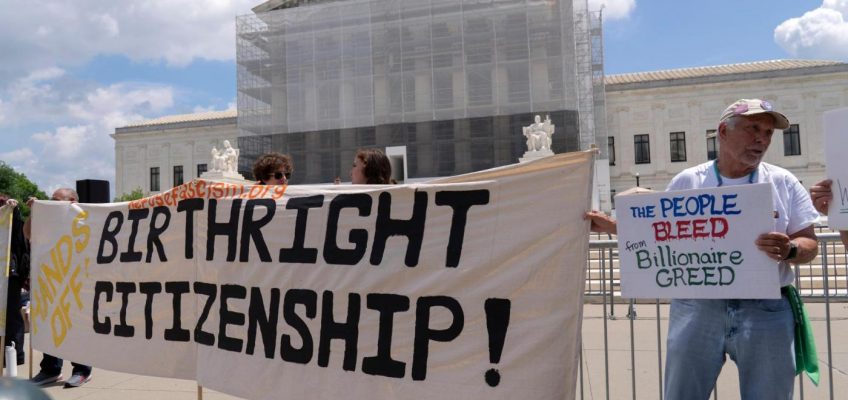By STEPHEN GROVES and LISA MASCARO
WASHINGTON (AP) — The House Ethics Committee on Friday told Rep. Alexandria Ocasio-Cortez to make additional payments for her attendance at the 2021 Met Fashion Gala, where she drew attention for wearing a dress adorned with the message “tax the rich.”
Related Articles
Judge blocks Trump’s birthright citizenship restrictions in third ruling since high court decision
FACT FOCUS: Trump claims cashless bail increases crime, but data is inconclusive
Epstein ex-girlfriend Ghislaine Maxwell finishes interviews with Justice Department officials
Trump administration investigates Oregon’s transgender athlete policies
In Epstein furor, Trump struggles to shake off a controversy his allies once stoked
The ethics panel, which found the New York Democrat had underpaid for some of the services and clothing for the event, also issued reports Friday on unrelated ethics allegations against Reps. Mike Kelly of Pennsylvania, Sheila Cherfilus-McCormick or Florida and Henry Cuellar of Texas.
In a 31-page report on the allegations against Ocasio-Cortez, the Ethics Committee said she had tried to comply with House rules on accepting gifts but failed by “impermissibly accepting a gift of free admission to the 2021 Met Gala for her partner and by failing to pay full fair market value for some of the items worn to the event.”
As a guest of Vogue, Ocasio-Cortez and her partner received tickets to the gala valued at $35,000, as well as customized clothing, hair and makeup styling and a hotel room to prepare for the high-society event.
The congresswoman worked with an attorney to comply with House ethics rules and paid for most of the goods and services with personal funds, but the ethics panel found “the payments were significantly delayed and some payments fell short of fair market value.”
NEW YORK, NEW YORK – SEPTEMBER 13: Alexandria Ocasio-Cortez and Aurora James attend The 2021 Met Gala Celebrating In America: A Lexicon Of Fashion at Metropolitan Museum of Art on September 13, 2021 in New York City. (Photo by Mike Coppola/Getty Images)
In a statement, Ocasio-Cortez’s chief of staff, Mike Casca, said: “The Congresswoman appreciates the Committee finding that she made efforts to ensure her compliance with House Rules and sought to act consistently with her ethical requirements as a Member of the House. She accepts the ruling and will remedy the remaining amounts, as she’s done at each step in this process.”
Rep. Mike Kelly
The House Ethics Committee issued a formal reproval Friday of Rep. Mike Kelly, R-Pa., following a yearslong investigation into an insider-trading allegation over his wife’s purchase of stock in a steel company in his Butler-area congressional district.
The panel also said Kelly and his wife, Victoria Kelly, should divest of any stock in the company, Cleveland-Cliffs, before the congressman takes any further official actions related to it.
FILE – Rep. Mike Kelly, R-Pa., speaks during a hearing on the Secret Service’s security failures regarding the assassination attempts on President-elect Donald Trump, Dec. 5, 2024, in Washington. (AP Photo/Rod Lamkey, Jr.)
While the committee said it “did not find evidence” that Kelly “knowingly or intentionally caused his spouse to trade based on insider information,” its report also said it “did not receive full cooperation from Mrs. Kelly and was therefore unable to determine whether her stock purchase was improper.”
However, the report said, “Representative Kelly’s failure to acknowledge the seriousness of the alleged misconduct” and of the investigation itself was a violation of the code of official conduct. The committee did “not find a clear violation” of conflict of interest.
The congressman said in a statement Friday, “My family and I look forward to putting this distraction behind us.”
Kelly noted the investigation has “unnecessarily” lasted for nearly five years, and in the time since the Cleveland Cliffs Butler Works plant faced an uncertain future.
“Throughout this process, I have fought for the 1,400 workers at the plant, I’ve spoken with these workers, and they appreciate the hard work we have done to fight for those jobs and for Butler,” Kelly said.
The investigation was launched after a July 2021 referral regarding allegations the congressman’s wife may have purchased stock based on confidential or nonpublic information he had learned during official duties.
The Ethics Committee staff reviewed more than 25,000 pages of documents, the report said, and interviewed people including the congressman. It found Kelly had advocated for so-called Section 232 tariffs for the product the plant produced even after Mrs. Kelly held stock in Cleveland-Cliffs.
“He took several actions to specifically benefit Cleveland-Cliffs during the time his wife had a direct financial interest in the company,” it said.
Rep. Sheila Cherfilus-McCormick
The House Ethics Committee announced Friday it had unanimously voted to reauthorize an investigative subcommittee to examine allegations involving Florida Rep. Sheila Cherfilus-McCormick.
In May, the Office of Congressional Ethics referred several allegations to the House Ethics committee, including claims Cherfilus-McCormick, a Democrat, accepted campaign contributions tied to official actions and requested community project funding for a for-profit entity.
FILE – Rep. Sheila Cherfilus-McCormick, D-Fla., speaks at an event, July 7, 2022, in Fort Lauderdale, Fla. (AP Photo/Wilfredo Lee, File)
The south Florida congresswoman has previously faced scrutiny over her campaign activities and the use of her congressional office. And earlier this year, a Florida state agency sued a company owned by her family, alleging it overcharged the state by nearly $5.8 million for pandemic-related work and has refused to return the funds.
In a statement, Cherfilus-McCormick underscored that the ethics panel had not reached any final decision and that the further review does not mean she made any violations.
“I fully respect the process and remain committed to cooperating with the Committee as it works to bring this inquiry to a close,” she said.
Rep. Henry Cuellar
The House Ethics Committee also reauthorized its investigation into Rep. Henry Cuellar over whether he engaged in multiple illegal abuses of his office. The committee launched its investigation into the Texas Democrat last year after the Justice Department indicted Cuellar on numerous federal charges, including bribery, conspiracy and money laundering.
FILE – U.S. Rep. Henry Cuellar, D-Laredo, speaks during a campaign event, May 4, 2022, in San Antonio. (AP Photo/Eric Gay, File)
The committee said in its reauthorization that lawmakers are “aware of the risks associated with dual investigations” and cautioned that “the mere fact of an investigation into these allegations does not itself indicate that any violation has occurred.”
Cuellar’s office did not immediately respond to a request for comment.
Associated Press writers Joey Cappelletti and Matt Brown contributed.




